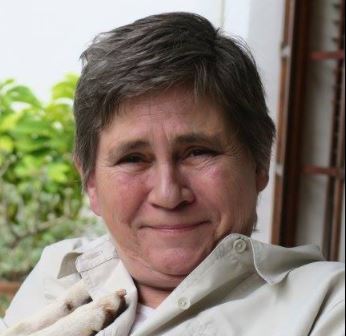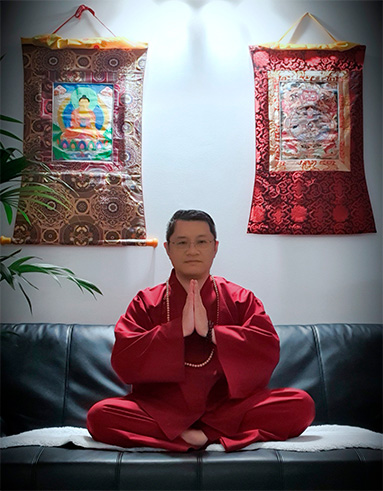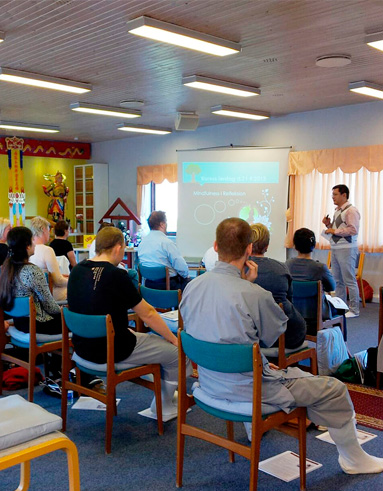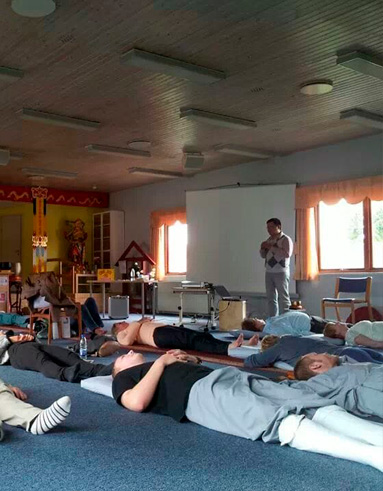
Sei ruhig, still und bewusst...
Entdecke dich selbst neu als mitfühlendes Gewahrsein – in Ruhe, Stille und Präsenz – um Angst, Sorgen und Stress zu verwandeln. Die Reise nach innen ist eine tiefgründige Entdeckung, nicht nur ein Ziel.
Ruhe in dem Hintergrundgewahrsein, aus dem alle Dinge entstehen, beobachtet werden und in das sie alle zurückkehren. Du bist dieses Gewahrsein – ewig still, unverkennbar, friedlich, leuchtend und unveränderlich – durch Zeit und Raum in Wachzustand, Traum und traumlosem Schlaf.
Bewusstseinsebenen des Menschen
Grob, subtil und subtilsten
In unserem Sein tanzt der grobe Geist im Licht des Tages – bewusst und nach außen gerichtet. Tiefer, unterhalb des Wachzustands, liegt der subtile Geist aus Träumen, Gefühlen und Erinnerungen – unsere unterbewusste Landschaft. Noch tiefer befindet sich der subtilste Geist: die unbewussten Tiefen reiner Potenzialität und Stille, wo die Samen unserer Erinnerungen ruhen. Mit dem inneren Erwachen erkennen wir, dass diese Schichten des Geistes wie sanfte Wellen auf einem weiten Ozean des Gewahrseins sind.
Alle Ebenen werden vom immer gegenwärtigen, unveränderlichen Zeugen umfangen. Dieses reine Gewahrsein leuchtet durch jeden Gedanken und jedes Gefühl hindurch und führt uns zu innerer Klarheit und Selbsterkenntnis. Auf dieser erhebenden Reise des Erwachens finden wir Frieden.
Jeder Teil von uns – das Bewusste, das Unterbewusste und das Unbewusste – erwacht gemeinsam im Gewahrsein. Jede Ebene des Geistes wird von Liebe und Weisheit getragen und offenbart die Wahrheit innerer Einheit und Einsicht. In diesem stillen Gewahrsein erinnern wir uns an unsere ewige Freiheit und unser inneres Licht. In dieser Stille erwachen wir wahrhaftig in leuchtendem Frieden.
Gesundheit und Wohlbefinden
Im Herzen der Achtsamkeitsmeditation liegt eine tiefgründige, aber einfache Wahrheit: Heilung und Wohlbefinden entstehen nicht durch Anstrengung, sondern durch das tiefe Ruhen in der eigenen Bewusstheit. Anstatt Frieden in äußeren Umständen zu suchen, lädt uns Achtsamkeit dazu ein, nach innen zu schauen – still zu werden, zu beobachten und sanft in der weiten Bewusstheit zu ruhen, die allen Gedanken, Emotionen und Empfindungen zugrunde liegt. Dieser Wechsel der Aufmerksamkeit – vom Tun zum Sein – öffnet einen natürlichen Zustand von Ausgeglichenheit und Ganzheit, den viele von uns im schnellen Alltag übersehen.
Wenn wir in der Bewusstheit ruhen, beginnt sich der Geist zu beruhigen. Stress, Angst und das ständige Gedankenkarussell verlieren allmählich ihre Macht. Diese innere Ruhe beruhigt das Nervensystem, senkt den Cortisolspiegel, verbessert die Konzentration und stärkt die emotionale Widerstandskraft. Mit der Zeit verändert sich sogar das Gehirn – es entwickelt stärkere neuronale Verbindungen, die mit Mitgefühl, Klarheit und emotionaler Regulierung verbunden sind. Achtsamkeit fördert zudem Akzeptanz und Geduld, sodass wir auf das Leben reagieren können, anstatt impulsiv zu handeln.
Die Vorteile gehen über den Geist hinaus. Achtsamkeitsmeditation hat gezeigt, dass sie Entzündungen reduziert, die Immunfunktion verbessert, den Blutdruck reguliert und die Schlafqualität unterstützt. Wenn der Geist seine gewohnte Anspannung loslässt, folgt der Körper – er entspannt sich in einen Zustand von Leichtigkeit und Vitalität.
Im Alltag zeigt sich diese innere Gesundheit auf praktische und bedeutsame Weise. Wir sind präsenter in unseren Beziehungen, geerdeter in Herausforderungen und empfänglicher für Schönheit und Dankbarkeit in gewöhnlichen Momenten. Aufgaben wirken leichter, Entscheidungen klarer, und Begegnungen mitfühlender. Die Welt zieht nicht mehr in alle Richtungen an uns – wir bewegen uns aus einer Mitte der Stille heraus durch sie.
Letztlich bedeutet in der Bewusstheit zu ruhen nicht, dem Leben zu entfliehen, sondern in tiefster Weise ins Leben zurückzukehren – zurück zum Wesenskern dessen, was wir wirklich sind, jenseits von Lärm, Rollen und Pflichten. In der Stille reiner Bewusstheit entdecken wir wieder, dass Frieden nichts ist, was man sich verdienen muss, sondern etwas, das schon immer da ist – sobald wir aufhören zu jagen und uns erlauben, einfach zu sein.
Aus diesem Raum heraus entfaltet sich das Leben mit größerer Leichtigkeit. Wir bewegen uns durch die Welt mit Klarheit statt Verwirrung, mit Stabilität statt Reaktivität. Jeder Atemzug, jede Begegnung wird absichtsvoller, weiter und lebendiger. Selbst inmitten von Schwierigkeiten finden wir einen inneren Zufluchtsort, der von äußeren Umständen unberührt bleibt.
Diese geerdete Präsenz befähigt uns, weisere Entscheidungen zu treffen, mit Freundlichkeit zu sprechen und zu handeln und mit größerer Freude und Authentizität zu leben. In der Bewusstheit zu ruhen bedeutet nicht, sich vom Leben zurückzuziehen – sondern ihm voll zu begegnen, mit offenem Herzen und erwachtem Geist.
Yoga, pranayama and mindfulness
Yoga-Asanas
Yoga-Asanas, also Körperhaltungen, sind darauf ausgelegt, den Körper in Positionen bewusster Ruhe zu bringen. In diesen eingefrorenen Momenten wird der Körper ruhig und stabil, wodurch sich der Geist beruhigen und mentale Unruhen legen können.
Diese Stille schafft die innere Voraussetzung dafür, dass sich Gewahrsein entfalten kann. Asanas regulieren zudem den Fluss von Prana – der lebenswichtigen Energie des Körpers – und bringen Gleichgewicht und Ruhe in Körper und Geist. Durch die Kultivierung von körperlicher Stabilität und energetischer Harmonie bereiten die Asanas den Übenden auf eine tiefere Meditation vor. Sie dienen als Tor zur inneren Stille, in der das Gewahrsein lebendig wird und sich der Weg zur wahren meditativen Versenkung eröffnet.
Yogische Atmung
Die yogische Atmung (Pranayama) ist eine Methode, um die lebenswichtige Energie des Körpers (Prana) auszugleichen und Harmonie zwischen Körper und Geist wiederherzustellen. Wenn sich das Prana stabilisiert, entspannt sich der Körper, und der Geist beginnt zur Ruhe zu kommen. Der Atem bewegt sich dann ganz natürlich in Richtung Kumbhaka – die Stille zwischen den Atemzügen – in der alle Bewegung zum Stillstand kommt.
Dieser Zustand bereitet den Geist auf Nirvikalpa Samadhi vor – die höchste Form meditativer Versenkung –, in der Atem und Geist in der Stille aufeinandertreffen und sich auflösen. In dieser Stille offenbart sich das Gewahrsein – nicht als etwas, das beobachtet wird, sondern als das, was wir sind. Mit dieser Erkenntnis fällt alles Leiden, das im mentalen Geschehen wurzelt, von uns ab, und nur reines Gewahrsein bleibt.
Meditation
Der Zweck der Meditation besteht darin, unsere wahre Natur wiederzuentdecken – reines Gewahrsein –, unveränderlich, ruhig und stets gegenwärtig. Anstatt uns in den Strömungen von Gedanken, Emotionen und Sinneseindrücken zu verlieren, lädt uns die Meditation dazu ein, im Gewahrsein zu ruhen.
Indem wir unsere Aufmerksamkeit von den sich ständig verändernden Aspekten unseres Selbst auf das unveränderliche Gewahrsein lenken, beginnen wir, uns von der inneren Unruhe zu befreien, die Stress und Depression verursacht. In dieser stillen und offenen Präsenz beginnen die Qualitäten des Gewahrseins – Ruhe, Klarheit und Mitgefühl – hervorzutreten und verwandeln unsere Beziehung zu uns selbst, zu anderen und zur Welt.
Gehirnwellen-Oszillation
Während der Meditation
ThetaAm besten geeignet für emotionale Heilung, Traumatransformation und das Umprogrammieren unterbewusster Muster
1/ Eintritt in den Theta-Zustand
2/ Sanftes Gewahrsein für den Schmerz entwickeln
3/ Das Unterbewusstsein umprogrammieren – einen positiven Samen pflanzen
4/ Regelmäßig wiederholen
Theta-Umprogrammierung wirkt, weil sie den denkenden Verstand umgeht und direkt mit dem Unterbewusstsein spricht. Indem wir diesen tief aufnahmefähigen Zustand mit Sicherheit, Absicht und Mitgefühl betreten, können wir Traumata loslassen, Depressionen lindern und das emotionale Gleichgewicht von innen heraus wiederherstellen.
Es gibt wissenschaftliche Belege dafür, dass Theta-Gehirnwellenzustände eine zentrale Rolle bei der emotionalen Heilung, der Traumaverarbeitung und dem Umprogrammieren des Unterbewusstseins spielen. Studien zeigen, dass das Gehirn im Theta-Zustand besonders empfänglich für neues Lernen und positiv ausgerichtete Veränderungen ist.
Beispiele aus der Forschung:
— David Spiegel, Stanford University: Hypnose (ein theta-dominanter Zustand) zeigte messbare Veränderungen in der Gehirnaktivität, die mit Selbstwahrnehmung sowie der Kontrolle von Schmerz und Emotionen in Verbindung stehen.
— Studien zur Achtsamkeitsmeditation (z. B. Sara Lazar, Harvard): Langfristige Meditation erhöht die Menge an grauer Substanz in Gehirnregionen, die mit emotionaler Regulation verbunden sind, und verringert die Größe der Amygdala.
Meditative Gehirnwellen
Alpha-Wellen ~ (8 - 12 Hz)
Alpha-Gehirnwellen (8–12 Hz) treten in den frühen Stadien der Meditation auf, wenn der Geist sich entspannt und die Gedanken langsamer werden. Dieser ruhige, wache Zustand verbessert die geistige Klarheit, reduziert Stress und fördert das emotionale Gleichgewicht. Alpha-Aktivität unterstützt Gedächtnis, Kreativität und Lernen und fördert gleichzeitig die körperliche Gesundheit durch Senkung des Blutdrucks und Unterstützung des Immunsystems. Sie bildet eine Brücke zwischen Wachsein und tieferer meditativer Versenkung.
Theta-Wellen ~ (4 - 8 Hz)
Theta-Gehirnwellen (4–8 Hz) entstehen in tieferen Meditationsphasen, wenn der Geist still und nach innen gerichtet ist. Sie sind mit tiefer Entspannung, Intuition und traumähnlichen Zuständen verbunden und fördern Kreativität, emotionale Heilung und Einsichten aus dem Unterbewusstsein. Dieser Zustand unterstützt die Gedächtniskonsolidierung, reduziert Stress und fördert regenerative körperliche Prozesse. Er markiert das Tor zu tiefster innerer Stille und transformierenden meditativen Erfahrungen.
Dieser Zustand wird mit tiefer Meditation, leichtem Schlaf und dem Rand des Bewusstseins assoziiert – dort, wo das Unterbewusstsein am besten zugänglich ist. Im Theta-Zustand ist das Gehirn besonders empfänglich und offen für Umprogrammierung. Dies ist der ideale Zustand, um Traumata zu verarbeiten und zu transformieren, einschränkende Glaubenssätze loszulassen und unterdrückte Emotionen zu erreichen. Praktiken wie geführte Meditation, Hypnotherapie und innere-Kind-Arbeit zielen oft auf diesen Zustand zur Heilung ab. Theta ermöglicht es dem Geist, alte emotionale Muster neu zu schreiben und so Depressionen, Wut und Stress an der Wurzel zu verändern.
Meditation, Theta und emotionales Gleichgewicht
Achtsamkeit und tiefe Meditation steigern oft die Produktion von Theta-Wellen.
Regelmäßige Meditation hat gezeigt, dass sie:
# Depressionen und Angstzustände reduziert# Die emotionale Regulation verbessert
# Cortisolspiegel (das Stresshormon) senkt
Gehirnareale wie die Amygdala (verantwortlich für Angst) und den präfrontalen Cortex (beteiligt an der Emotionsregulation) umverdrahtet
➡️ Theta-bezogene Meditation schafft die richtigen Voraussetzungen für dauerhafte emotionale Heilung.Delta-Wellen ~ (0,5 - 4 Hz)
Delta-Gehirnwellen (0,5–4 Hz) treten in den tiefsten Zuständen der Meditation und im Non-REM-Schlaf auf, wenn das Bewusstsein rein und der Geist völlig still ist. Verbunden mit tiefer Heilung fördern Delta-Wellen die zelluläre Regeneration, die Immunfunktion und eine umfassende körperliche Erholung. Geistig unterstützen sie den emotionalen Loslassprozess und den Zugang zu nonverbalem Gewahrsein und bieten einen Zustand zeitloser Präsenz und tiefer innerer Ruhe.
Innere Erforschung
Reflektierendes Schreiben
Reflektierendes Schreiben ist eine transformative Sichtweise, die uns einlädt, wieder mit unserem wahren Wesen in Verbindung zu treten – dem unveränderlichen Gewahrsein, das von Anfang an mit uns ist. Indem wir uns auf diese introspektive Reise begeben, können wir über die Identifikation mit unseren Gedanken, Gefühlen, Emotionen und unserem physischen Körper hinausgehen.
Stattdessen erkennen wir die beständige, beobachtende Präsenz in uns. Diese Praxis dient als sanfte Erinnerung, zu unserem Kern zurückzukehren und Klarheit sowie Frieden inmitten der Schwankungen des Lebens zu finden. Durch die Sichtweise des reflektierenden Schreibens werden wir eingeladen, uns selbst neu zu entdecken und den Alltag mit Leichtigkeit, Verständnis und Mitgefühl zu meistern.

Die Reise zur Selbsterforschung
Menschen zeigen viele sichtbare Unterschiede in Körperform, Größe, Hautfarbe und Gesichtszügen. Doch unter diesen physischen Unterschieden sind unsere biologischen Strukturen nahezu identisch – wir alle besitzen die gleichen Organe. Das erinnert uns daran, dass wir auf der physischen Ebene im Grunde gleich sind. Psychologisch wird unsere Individualität durch einzigartige Gedanken, Gefühle und Vorlieben deutlicher. Selbst eineiige Zwillinge haben unterschiedliche Gedanken und Erfahrungen. Dennoch teilen alle Menschen einen gemeinsamen Antrieb: das Streben nach Glück. Oft glauben wir, dass Glück in äußeren Dingen liegt – in Jobs, Beziehungen oder Besitz. Wahres Glück jedoch entsteht nicht aus äußeren Umständen. Es entspringt unserem eigenen Geist und Körper. Äußere Ereignisse können Gefühle auslösen, doch die Emotionen entstehen aus unserem inneren Zustand. Glück ist nichts, was andere geben oder nehmen – es wird durch unsere eigenen Reaktionen erzeugt. Wenn wir dies erkennen, übernehmen wir die Verantwortung für unser emotionales Wohlbefinden zurück. Wir entdecken, dass die wahre Quelle des Glücks in uns selbst liegt.
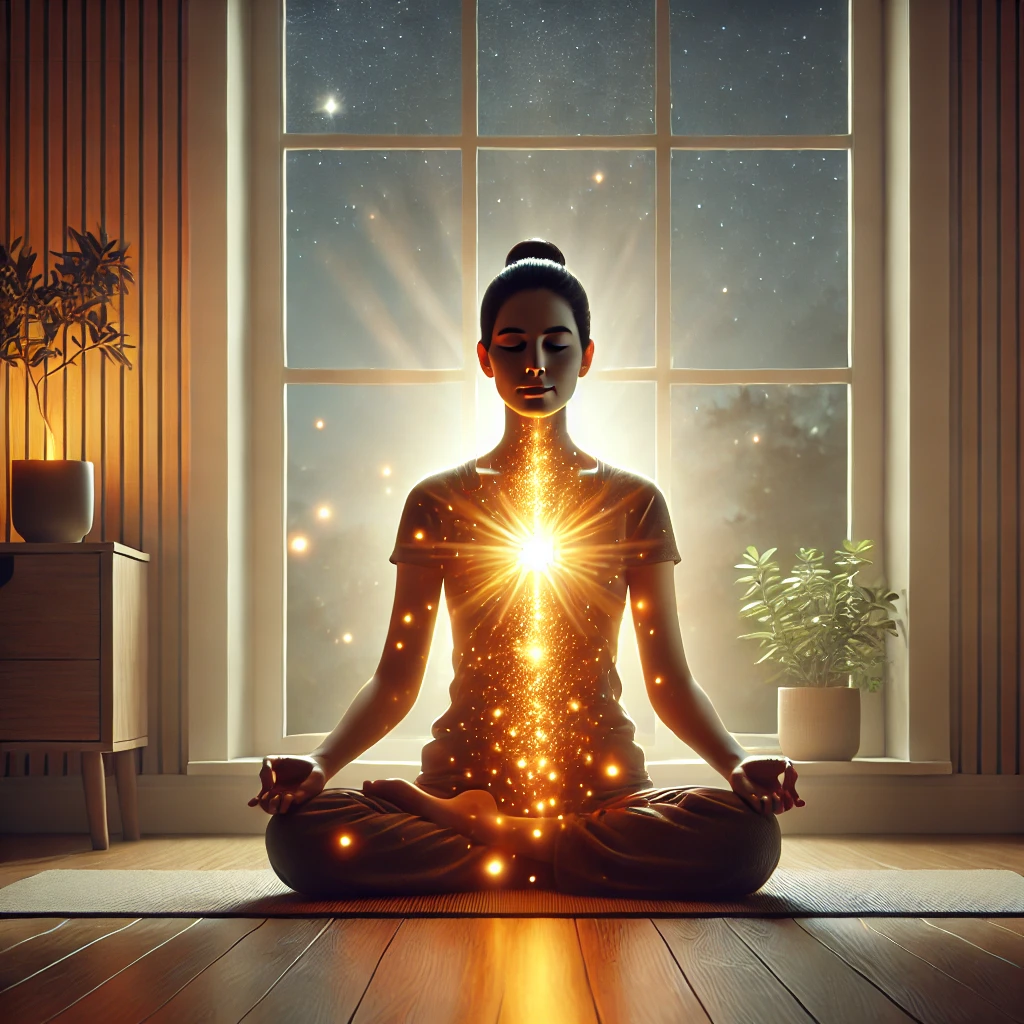
Ein Weg zu erfülltem Leben
Das Verständnis des bewussten, unterbewussten und unbewussten Geistes hilft uns, mit mehr Klarheit und Ziel zu leben. Diese drei Ebenen bilden ein miteinander verbundenes System, das Wahrnehmung, Verhalten und Wohlbefinden beeinflusst. Der bewusste Geist ist unser aktives Bewusstsein – er plant, entscheidet und setzt Absichten. Er neigt oft zum Überanalysieren, was zu Stress führt, wenn er versucht, alles zu kontrollieren. Indem er den tieferen Schichten vertraut, kann sich der bewusste Geist auf Präsenz und sinnvolles Handeln konzentrieren. Der unterbewusste Geist arbeitet still im Hintergrund und steuert Gewohnheiten, Emotionen und erlernte Verhaltensweisen. Er funktioniert wie ein erfahrener Fahrer, der uns basierend auf vergangenen Erfahrungen und innerer Programmierung leitet. Ruhe und geistige Klarheit verbessern die Effektivität des unterbewussten Geistes. Der unbewusste Geist ist die tiefste Ebene, in der Instinkte, verborgene Muster und universelle Wahrheiten gespeichert sind. Obwohl unsichtbar, prägt er unsere Gedanken und unser Verhalten stark. Die Harmonisierung aller drei Geistesebenen fördert Resilienz, inneren Frieden und ein erfülltes Leben.
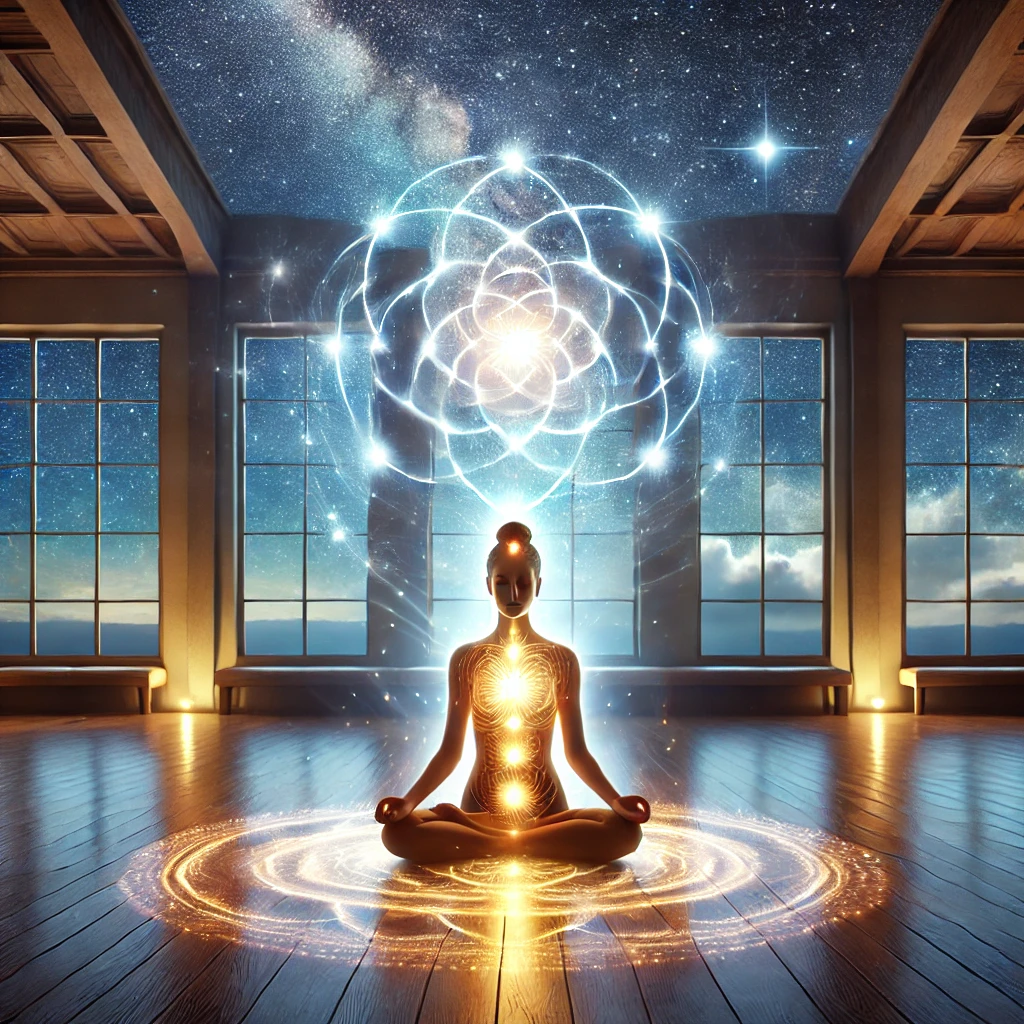
Ausgleich von Bewusstheit und fokussierter Aufmerksamkeit
In einer schnelllebigen Welt ist der Ausgleich von Bewusstheit und fokussierter Aufmerksamkeit der Schlüssel zu innerem Frieden. Bewusstheit bedeutet, präsent zu sein, ohne zu urteilen – Gedanken und Emotionen einfach nur zu beobachten. Dieser Zustand fördert Ruhe, reduziert Stress und stärkt emotionale Widerstandskraft sowie Flexibilität. Er unterstützt auch die Kreativität, indem er den Geist von starren Mustern und Bindungen befreit. Fokussierte Aufmerksamkeit hingegen beinhaltet absichtliche Konzentration und hilft uns, uns effektiv auf Aufgaben einzulassen. Die Beherrschung beider Zustände ermöglicht es uns, den Herausforderungen des Lebens mit Klarheit und Stabilität zu begegnen. Meditation ist ein wichtiges Werkzeug, um den Geist darin zu schulen, zwischen Bewusstheit und Fokus zu wechseln. Regelmäßiges Üben schafft Vertrautheit und macht die friedvolle Präsenz im Alltag leichter zugänglich. Dieses mentale Training fördert Selbstmitgefühl, Akzeptanz und psychisches Wohlbefinden. Letztendlich verbindet uns der Ausgleich dieser Zustände wieder mit unserem wahren Wesen und dauerhaftem Frieden.
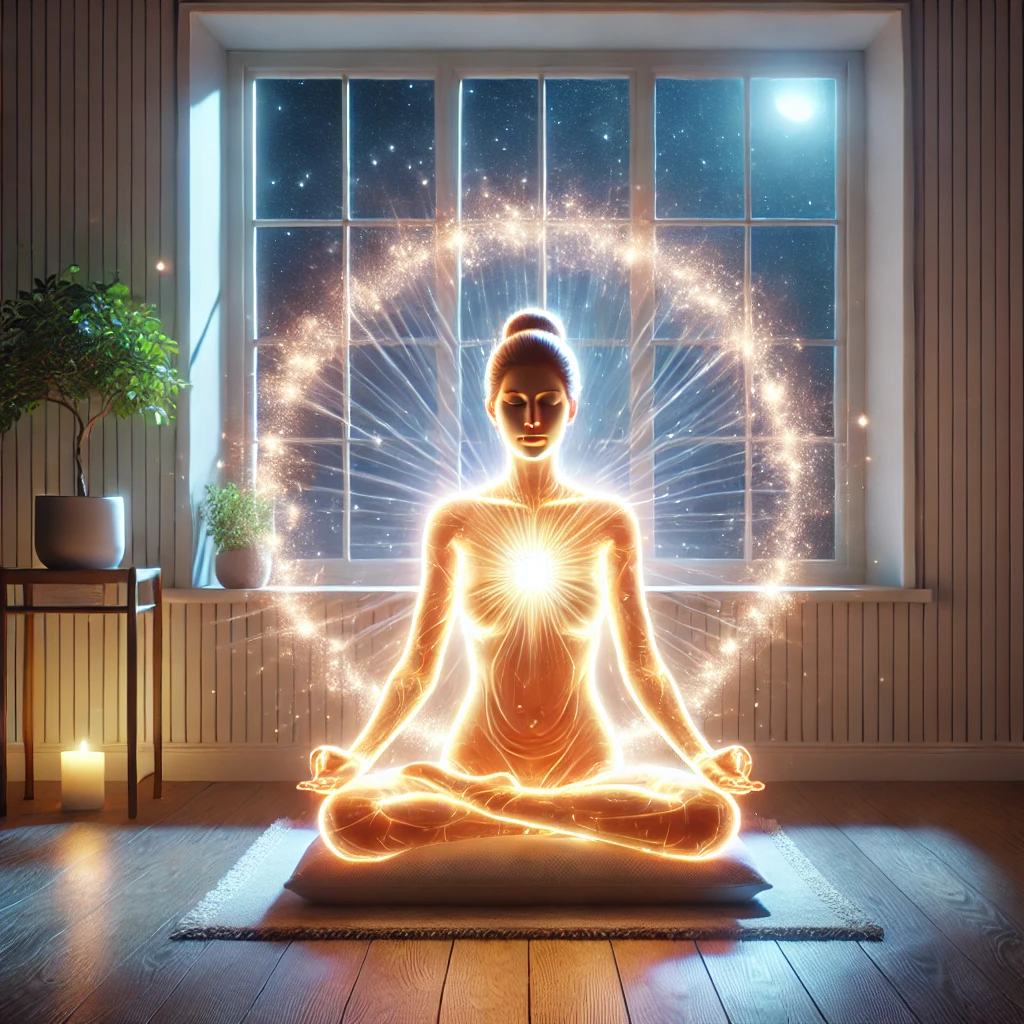
Der wahre Geist
In jedem von uns fließt sowohl ein unruhiger, reaktiver Geist als auch ein stiller, unveränderlicher wahrer Geist. Der wahre Geist ist rein, wortlos und immer gegenwärtig – unbeeinflusst von Emotionen oder Lebensereignissen. Wir wachsen eingebettet in emotionale Reaktionen auf und vergessen die Stille darunter. Spirituelle Praxis bedeutet nicht, gegen Emotionen anzukämpfen, sondern sanft zur inneren Klarheit zurückzukehren. Wenn wir den wahren Geist erkennen, beruhigt sich der reaktive Geist ganz natürlich, ohne Zwang. Diese Erkenntnis geschieht nicht durch Denken, sondern durch Stille und direkte Erfahrung. Der unveränderliche Geist ist immer präsent – wach, träumend oder schlafend – unberührt von Unruhe. Wahrer Frieden wird nicht erschaffen; er wird entdeckt, indem wir innehalten und tief sehen, was bereits da ist. Selbst in Schmerz oder Angst gibt es einen stillen Raum in uns, der ganz und ungestört bleibt. Wahre Praxis findet nicht unter idealen Bedingungen statt, sondern durch klares Sehen in jeder Situation.

Selbstbefragungstechniken – Eine Reise zur Bewusstheit
Selbstbefragung ist eine Praxis, bei der wir uns nach innen wenden, um unser wahres Selbst jenseits von Gedanken und Rollen zu erforschen. Indem wir Fragen stellen wie „Bin ich hier?“ und bekräftigen „Ich bin hier“, gelangen wir zu einer tieferen Bewusstheit, die immer in uns gegenwärtig ist. Diese Bewusstheit ist beständig, unveränderlich und steht im Gegensatz zu flüchtigen Gedanken und Emotionen. Das Verständnis von Bewusstheit als zeitlos, formlos und sich selbst erkennend ist entscheidend für die Selbstbefragung. Bewusstheit ist der stille Zeuge aller Erfahrungen, unbeeinflusst von mentaler Unruhe. Selbstbefragung hilft uns, diese Bewusstheit von den vorübergehenden Aspekten unseres Selbst zu unterscheiden. Die Praxis besteht darin, still zu sitzen, innerlich Fragen zu stellen und in der Empfindung der Gegenwart zu ruhen. Wenn Gedanken auftauchen, beobachten wir sie ohne Anhaftung und richten die Aufmerksamkeit wieder auf die Bewusstheit. Selbst wenn der Geist abschweift, bleibt die Präsenz der Bewusstheit beständig und zugänglich. Letztlich geht es bei der Selbstbefragung darum, die immerwährende Bewusstheit zu erkennen und in ihr zu ruhen, die unser wahres Wesen ausmacht.

Die Transformation des Schmerzes vergangener Erfahrungen
Schmerz durch vergangene Traumata wiederholt sich oft, weil der bewusste Geist unterbewusste symbolische Erinnerungen fehlinterpretiert. Diese emotionalen Schleifen halten das Leiden lebendig, obwohl das ursprüngliche Ereignis längst vorbei ist. Die Bewusstheit, der unveränderliche Beobachter in uns, nimmt den Schmerz wahr, ohne von ihm verletzt zu werden. Indem wir in die Bewusstheit eintreten, trennen wir uns vom Schmerz und lösen uns aus der Opferrolle. Bewusstes Umdeuten hilft, die Schmerzerzählung neu zu schreiben und alte Interpretationen in heilende Perspektiven zu verwandeln. Schmerz als vorübergehende Erfahrung zu betrachten, nicht als bestimmende Realität, mildert seine emotionale Kraft. Mitfühlende Beobachtung ermöglicht es uns, das Leiden loszulassen und unsere Widerstandskraft zurückzugewinnen. Eine Meditationspraxis unterstützt diesen Prozess durch Fokussierung auf Schmerz, Atmung und achtsames Umdeuten. Diese Übung fördert die Sichtweise, Schmerz als vom Selbst getrennt zu sehen und mit Freundlichkeit darauf zu reagieren. Letztlich ermöglichen Bewusstheit und Umdeutung tiefe Heilung und Freiheit von wiederkehrenden Schmerzzyklen.

Die universelle Angst vor dem Tod
Die universelle Angst vor dem Tod entspringt einem Instinkt zur Lebenserhaltung, der in der ewigen Bewusstheit verwurzelt ist, die in allen Wesen gegenwärtig ist. Bewusstheit ist vom vergänglichen Körper getrennt, was zu Angst führt, wenn wir uns ausschließlich mit der physischen Existenz identifizieren. Der Mensch ist einzigartig darin, über diese Angst nachzudenken – und sie zu überwinden, indem er seine wahre, unsterbliche Natur erkennt. Erleuchtete Menschen sehen den Tod als ein Abstreifen des Körpers, nicht als ein Ende. Die Wissenschaft hat Bewusstheit lange ignoriert, doch inzwischen wird sie zunehmend zusammen mit Psychologie und Künstlicher Intelligenz erforscht. Chinesische Wissenschaftler sind Vorreiter bei der Entwicklung KI-gesteuerter Systeme mit gehirnähnlicher Struktur, um bewusst agierende Maschinen zu erschaffen. Trotz technologischer Fortschritte wird wahre Bewusstheit nur nach innen entdeckt – jenseits von Körper und Geist. Bewusstheit ist das Wesen, das den Körper enthält, nicht umgekehrt. Eine einfache Meditation hilft, sich mit dieser unveränderlichen Präsenz zu verbinden und die Angst vor dem Tod zu überwinden. Selbsterkenntnis ist eine Rückkehr zu unserem ewigen Wesen – eine Brücke zwischen alter Weisheit und moderner Wissenschaft.
Herzensqualitäten
Herzensqualitäten durch gegenwärtiges Gewahrsein kultivieren
Herzensqualitäten wie Freude, Ruhe, Stille, Mitgefühl und Freundlichkeit sind uns von Natur aus gegeben. Sie entstehen auf natürliche Weise, wenn wir ganz im gegenwärtigen Moment verweilen.
Doch das mentale Rauschen – Gedanken, Emotionen und selbstbezogene Gewohnheiten – kann diesen inneren Reichtum überdecken und uns von unserem wahren Wesen entfremden.
Obwohl der gegenwärtige Moment tief in uns lebt, wird seine Klarheit getrübt, wenn wir in unbewusste Muster verstrickt sind und ihn durch die Linse konditionierten Denkens wahrnehmen.
Um uns wieder mit diesem innewohnenden Gewahrsein zu verbinden, ist es wesentlich, die Kunst des Loslassens und der Entspannung zu erlernen. Durch diese Praxis beginnen wir, unsere Identifikation mit Gedanken, Gefühlen und der rastlosen Aktivität des Geistes zu lockern. Entspannung schafft inneren Raum, in dem das Gewahrsein ungehindert durchscheinen kann. Und je klarer sich dieses Gewahrsein zeigt, desto mehr kann sich eine stille Fülle aus unserem Innersten heraus entfalten. Dies ist nichts, was wir erzeugen – es ist bereits da.
Eigenschaften wie Ruhe, Stille, Mitgefühl, Freundlichkeit und Kreativität entspringen auf natürliche Weise dieser Tiefe. Diese Herzensqualitäten werden nicht durch Anstrengung erreicht, sondern entfalten sich mühelos, wenn der Geist zur Ruhe kommt und wir im Sein verweilen. Sie sind der Duft des reinen Gewahrseins selbst – sanft, weise und offen – und sie führen uns zu einem liebevolleren, authentischeren und offeneren Dasein.
Dharma-Praktizierender
Huan M. Vuong
Ein lebenslanger Suchender, Huan Minh Vuong hat über 30 Jahre damit verbracht, den Weg der inneren Erkenntnis zu gehen. Durch Stille, Einsicht und unerschütterliche Hingabe hat er die bewusste Stille im Herzen aller Erfahrungen entdeckt – und teilt dieses Licht nun mit anderen. Seine Arbeit lädt dich ein, zu deinem Wahren Selbst zurückzukehren, wo Frieden, Klarheit und innere Bewusstheit darauf warten, dass du heimkehrst.
Erfahrungsberichte
Kursteilnehmer

